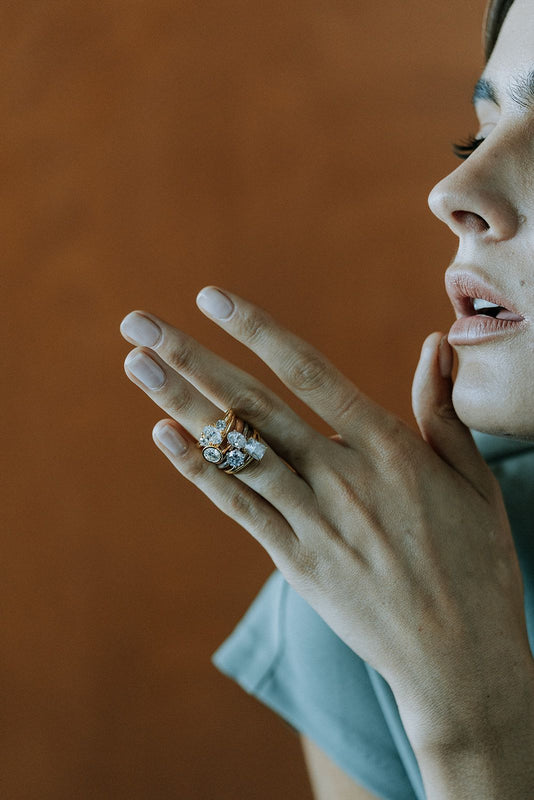Diamond Shapes and Cuts: A Comprehensive Guide
Uncategorized October 29, 2024, Comments Off
Diamonds are one of the most sought-after gemstones in the world, celebrated for their brilliance and timeless appeal. The allure of diamonds is often enhanced by their shape and cut, two critical factors that contribute to their overall beauty and value. Whether you’re looking for an engagement ring or a special gift, understanding the different diamond shapes and cuts will help you make an informed decision. In this article, we will explore the key aspects of diamond shapes and cuts, with a special focus on the growing popularity of lab-grown diamonds.
Understanding Diamond Shapes
The shape of a diamond refers to its physical form and outline, which can vary greatly. There are several popular diamond shapes, each with its own unique characteristics.
The round brilliant cut is the most traditional and widely recognized shape. Known for its timeless elegance, it is the most popular choice for engagement rings. This shape maximizes brilliance by incorporating 58 facets, ensuring a dazzling display of light. Other popular diamond shapes include the princess cut, which features sharp corners and a square or rectangular outline, offering a modern and sophisticated look. The emerald cut is another favorite, with its rectangular shape and step facets, giving it a vintage and sleek appearance.
Other diamond shapes include the oval, pear, marquise, and cushion cuts, each offering a distinctive visual appeal. The oval and pear cuts provide a more elongated silhouette, making them appear larger than their carat weight might suggest. The marquise cut, with its pointed ends, creates an illusion of greater length. The cushion cut, with its rounded corners and larger facets, is perfect for those seeking a vintage-inspired look.
Diamond Cuts: The Art of Precision
While the shape of a diamond is important, the cut is arguably even more significant in determining its overall beauty. The term “cut” refers to the diamond’s proportions, symmetry, and how well it reflects light. A well-cut diamond will exhibit exceptional brilliance, sparkle, and fire.
The cut is assessed based on several factors, including the quality of the facets, the overall symmetry, and how well the diamond is proportioned. A diamond with ideal proportions and flawless symmetry will shine with an intense brilliance, while a poorly cut diamond may appear dull and lackluster, even if it has a high carat weight.
Diamonds are graded on a scale of Excellent, Very Good, Good, Fair, and Poor, with Excellent cut diamonds offering the best performance in terms of light reflection. The brilliance of a diamond is directly affected by how well it is cut. For example, the round brilliant cut, with its precise faceting and proportions, is renowned for its exceptional sparkle. Other popular cuts, such as the princess and cushion cuts, are also designed to maximize brilliance, though they may feature slightly different cutting styles.
Lab-Grown Diamonds: A Modern Innovation
In recent years, lab grown diamonds have gained significant popularity in the jewelry industry. These diamonds are virtually identical to natural diamonds in terms of their chemical composition, physical properties, and appearance, yet they are created in a laboratory setting rather than being mined from the earth.
Lab-grown diamonds are made using two primary methods: High Pressure High Temperature (HPHT) and Chemical Vapor Deposition (CVD). Both methods mimic the natural conditions under which diamonds form in the earth, resulting in diamonds that are chemically identical to natural diamonds. However, because lab-grown diamonds are produced in a controlled environment, they tend to be more affordable than their natural counterparts, offering consumers an ethical and budget-friendly option.
In terms of shapes and cuts, lab-grown diamonds are available in the same range as natural diamonds, including round, princess, cushion, and more. The cutting process for lab-grown diamonds is the same as that for natural diamonds, ensuring that they can be crafted into any desired shape or cut. Many people are now opting for lab-grown diamonds because they offer the same beauty and durability as mined diamonds but with fewer environmental and ethical concerns.
The Future of Diamond Shapes and Cuts
As technology advances, the diamond industry continues to evolve. The rise of lab-grown diamonds has opened up new possibilities for consumers, offering a more sustainable and cost-effective alternative to traditional mined diamonds. In the future, we may see even more innovative shapes and cuts emerging as technology continues to improve.
Diamond cutters are always experimenting with new ways to enhance a diamond’s brilliance and fire. As the demand for lab-grown diamonds grows, we can expect to see more options in terms of shapes and cuts, providing consumers with greater variety and choice. Whether you are drawn to the classic round brilliant or a more unique shape like the marquise or cushion cut, the future of diamonds looks brighter than ever.
Conclusion
Understanding the differences between diamond shapes and cuts is essential for anyone looking to purchase a diamond. While the shape defines the overall form of the diamond, the cut determines its brilliance and sparkle. With the increasing availability and popularity of lab-grown diamonds, consumers now have access to beautiful, high-quality diamonds at more affordable prices. Whether you choose a natural or lab-grown diamond, the perfect shape and cut will ensure that your diamond is a stunning and lasting symbol of beauty.